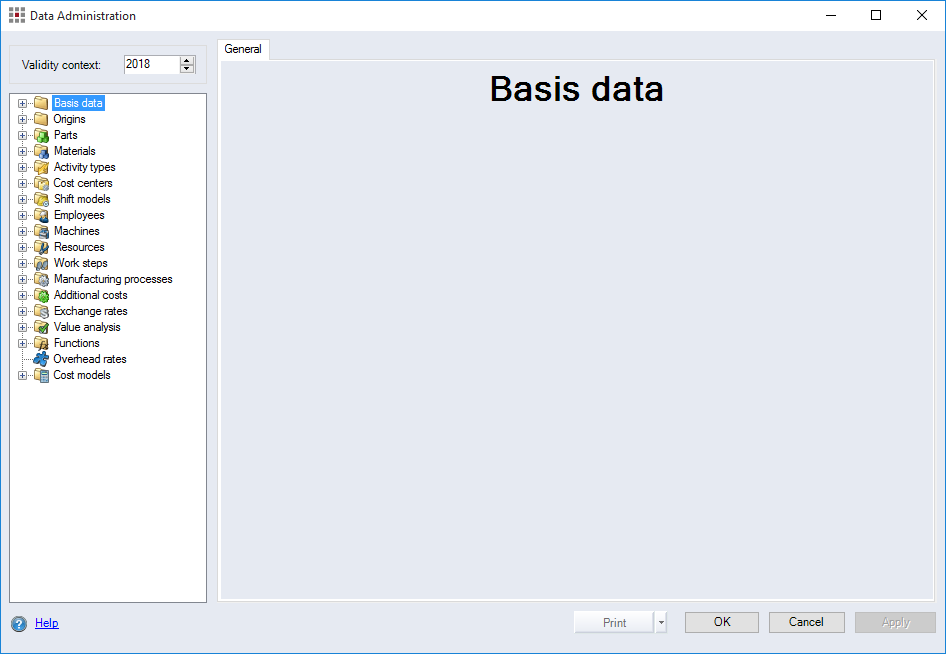Data Administration allows you to manage all operational master data required for working in the projects.
Open Data Administration
-
In the ribbon, click on View ►
 Data Administration.
Data Administration.Alternative: Click
The Data Administration dialog opens.

Figure: Data Administration dialog
| "Validity context" date combobox: | Shows the validity period for all categories. |
| Structure view | The structure view displays master data in categories and groups. |
| Tabs | Up to four tabs are displayed for each element highlighted in the structure view. |
Data Administration structure
The Data Administration dialog is divided into two sections:
- The left side shows the tree structure of the master data categories.
- The right side shows different tabs depending on the master data category.
The Data Administration is organized in the following categories:
| Category | Description |
|---|---|
|
|
In this category, you can define the costing scheme with the surcharge rates, the basic data types and the customs duties tariffs. |
|
|
This category manages all locations (factories), suppliers, customers, stock exchanges and systems. |
|
|
This category manages purchased and standard parts. The prices can be administered with a temporal validity and origin. |
|
|
This category manages basic materials, resources and semifinished parts. |
|
|
This category manages activity types. Activity types are required for cost centers. |
|
|
In this category, you can manage cost centers with one or more activity types. All tariffs can be edited with a temporal validity and origin. |
|
|
This category manages all locations (factories), suppliers, customers, stock exchanges and systems. These information are used for machine hourly rate and labor cost calculation. |
|
|
In this category, you can administer single labor tariffs location-specifically. |
|
|
Use this category to manage machines. Machines will have their calculation context only when they are used in the project. |
|
|
In this category, you can administer work steps that are to be assigned to machines or employees. |
|
|
This category is used for managing manufacturing processes. The manufacturing processes are used in the project to develop routings. |
|
|
In this category, you can define additional costs via cost rates, cost types and allocation types. |
|
|
Use this category to define exchange rate tables and exchange rates. Location-specific, supplier-specific and customer-specific exchange rate tables can be managed in Data Administration. All exchange rates can be edited with a temporal validity. |
|
|
In this category, you can define criteria and weightings for the value analyses. |
|
|
This category is used for managing function trees for the function costs analysis. The individual function costs can be determined in the project via the assignment. |
|
|
This category shows the benchmark data of the FACTON content. The data cannot be changed. The selection and transposition happens in the project. |
|
|
This category is used for managing cost models for manufacturing processes and additional costs. |